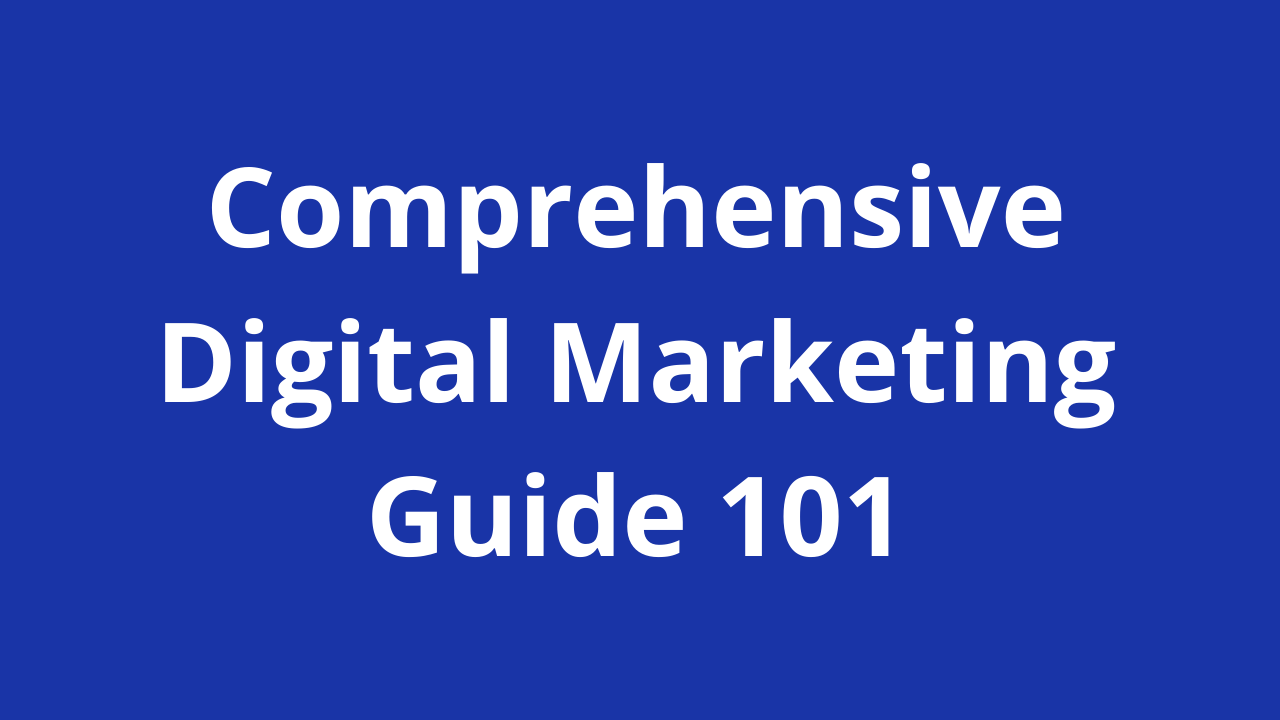In today’s digital age, a robust online presence is no longer a luxury; it’s an essential tool for any thriving digital marketing agency. Your website serves as your digital storefront, a platform to showcase your expertise, attract potential clients, and solidify your position as a leader in the industry.
However, building a website that effectively converts visitors into leads necessitates meticulous planning, strategic design, and content that resonates deeply with your target audience. This comprehensive guide equips you with the knowledge and steps needed to construct a high-performing digital marketing website, empowering you to conquer the ever-evolving digital landscape.
By following these steps and continuously refining your website, you can create a powerful online presence that attracts high-value clients, showcases your expertise, and establishes you as a thought leader within the digital marketing domain.
Planning and Foundation

1. Conquer Your Goals and Target Audience
The initial step involves establishing your website’s objectives. Are you aiming to generate high-quality leads, showcase your impressive portfolio of work, or educate potential clients about the vast array of digital marketing services you offer? Identifying your goals will inform your website’s design, content strategy, and overall user experience.
Next, delve into understanding your ideal client. Who are you striving to reach? By comprehending their specific needs, pain points, and online behavior patterns, you can tailor your website’s messaging and offerings to resonate effectively with them.
2. Choose a Domain Name and Web Hosting
Your domain name is essentially your website’s address on the internet. Select a name that is relevant, memorable, and easy to spell for potential clients. Ideally, it should incorporate keywords related to digital marketing to enhance discoverability in search engines.
Web hosting provides the storage space for your website’s files and makes it accessible online. Opt for a reliable web hosting provider that offers features like scalability, robust security measures, and exceptional customer support.
3. Content Management System (CMS) Selection
A Content Management System (CMS) simplifies website creation and ongoing management. Popular options for digital marketing agencies include WordPress, Wix, and Squarespace. Each platform offers its own set of features, learning curves, and pricing structures. Consider factors like ease of use, customization options, scalability, and budget when making your selection.
Design and User Experience�

1. Design for User Experience (UX)
Your website’s design should prioritize a seamless user experience (UX). This translates to creating a website that is visually appealing, effortlessly navigable, and functions flawlessly across various devices, from desktops and laptops to smartphones and tablets.
Here are some key UX design principles to keep in mind:
- Clean and uncluttered layout:Avoid overwhelming visitors with excessive information or complex navigation.
- Mobile-friendliness:Ensure your website adapts seamlessly to smartphones and tablets, as a significant portion of web traffic now originates from mobile devices.
- High-quality visuals: Utilize professional images and videos to enhance your brand image and convey information effectively.
- Clear call to action (CTA):Tell visitors what you want them to do next, whether it’s contacting you for a consultation, subscribing to your newsletter, or requesting a free quote.
2. Branding Consistency
Your website should be a seamless extension of your established brand identity. Maintain consistent use of your brand colors, fonts, and logos throughout the website. This reinforces brand recognition and creates a professional image that inspires trust with potential clients.
Content is King�

1. Compelling and Informative Content
Content forms the backbone of a successful digital marketing website. Craft high-quality content that educates potential clients about the various digital marketing strategies available, showcases your expertise, and positions you as a thought leader within the industry.
Here are some content ideas to get you started:
- Blog posts: Address your target audience’s pain points and offer valuable solutions related to digital marketing challenges.
- Case studies: Highlight your successful digital marketing campaigns for past clients, showcasing the positive impact you’ve delivered.
- White Papers and ebooks:Delve deeper into specific digital marketing topics, providing valuable insights and establishing your authority within the field.
- Client testimonials: Feature positive testimonials from satisfied clients to demonstrate your effectiveness and trustworthiness.
2. Search Engine Optimization (SEO)
Optimize your website content for search engines like Google to improve your organic ranking and attract potential clients actively searching for digital marketing services. This includes incorporating relevant keywords throughout your website content, strategically using meta descriptions and title tags and building high-quality backlinks from reputable websites in the digital marketing space. By implementing these SEO best practices, you increase the likelihood of your website appearing on the first page of search engine results for relevant keywords, driving organic traffic and attracting qualified leads.
3. Content Freshness
Regularly update your website with fresh, informative content. This not only keeps visitors engaged but also demonstrates your thought leadership and commitment to staying current with the ever-evolving digital marketing landscape. Aim to publish new blog posts, case studies, or industry insights on a consistent basis. A well-defined content calendar can help you plan and schedule content creation to ensure a steady stream of fresh content for your website.
Conversion Optimization�

Your website shouldn’t just showcase your services; it should effectively convert visitors into leads. Here are some strategies to boost conversion rates and turn website traffic into valuable clients:
- Clear CTAs (Calls to Action): Place clear and compelling CTAs throughout your website, strategically positioned to guide visitors towards taking the desired action. Examples include buttons prompting visitors to “Contact Us,” “Request a Free Quote,” or “Subscribe to Our Newsletter.”
- Lead Magnets: Offer valuable resources like downloadable ebooks, whitepapers, or webinars in exchange for a visitor’s email address. This allows you to capture leads and nurture them into potential clients through email marketing campaigns.
- Social Proof: Showcase positive client testimonials and case studies that demonstrate your success and build trust with potential clients.
- Live Chat Functionality: Consider implementing a live chat feature on your website to provide real-time support and answer any questions visitors may have, potentially converting them into leads.
Advanced Features and Ongoing Management
1. Integrations and Functionality
Enhance user experience and lead generation by integrating additional functionalities into your website. Some valuable integrations for digital marketing agencies include:
- Contact forms: Allow visitors to easily reach out for inquiries or consultations directly through your website.
- Email capture forms: Build your email list for future marketing campaigns by offering valuable resources or exclusive content in exchange for email addresses.
- Analytics tools: Utilize analytics tools like Google Analytics to track website traffic, user behavior, and conversion rates. This data provides valuable insights to optimize your website for better performance.
- Social media integration: Encourage social sharing of your content and connect with your audience on social platforms by strategically integrating social media buttons and feeds.
2. Website Security
Website security is paramount to protect your website and visitor data. Implement a Secure Sockets Layer (SSL) certificate to encrypt data transmission and instill trust with visitors. Regularly update your CMS, plugins, and themes to address security vulnerabilities and potential breaches. Consider partnering with a reputable security service provider for added protection, especially if you handle sensitive client information.
3. Ongoing Management and Maintenance
Maintaining a website requires consistent effort. Regularly update your content, monitor website performance using analytics tools, analyze traffic data to understand user behavior, and address any technical issues promptly. Creating a website maintenance checklist can help ensure your website stays fresh, secure, and functioning optimally.
Conclusion
Building a high-performing digital marketing website requires dedication, strategic planning, and continuous optimization. By following the steps outlined in this comprehensive guide and constantly refining your website based on data and industry trends, you can create a powerful online presence that attracts high-value clients, showcases your expertise, and establishes you as a leader in the digital marketing landscape. Remember, your website is a living entity. Continuously adapt and improve it to stay ahead of the curve and thrive in the ever-evolving digital world.
Bonus Tip: Promote Your Website
Don’t just build your website and wait for visitors to find you proactively promote your website through various digital marketing channels. Utilize social media marketing, search engine advertising (SEA), content marketing, and email marketing to drive targeted traffic to your website and generate qualified leads. By implementing a comprehensive digital marketing strategy, you can effectively reach your target audience and achieve your business goals.

